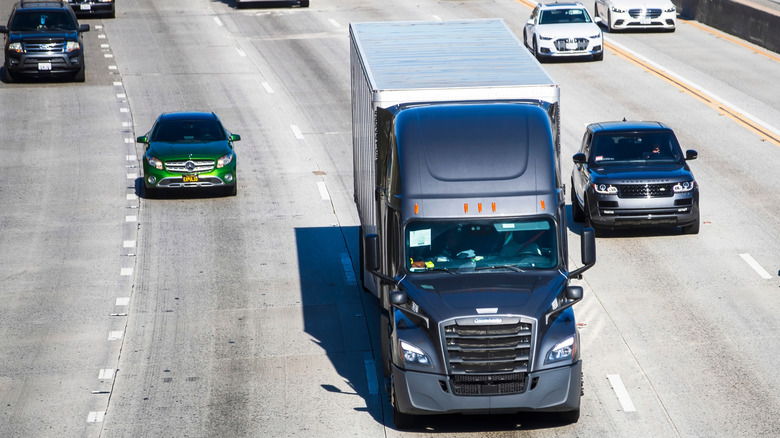How Old Is The Average Semi-Truck Driver? Here's What The Data Says
America's truckers are aging, and a report by the American Transport Research Institute suggests that more needs to be done to get new truckers into the industry. Citing 2023 government census data, the report says that the average trucker is 47 years old. That's a small increase compared to 2017 data, which pegged the average trucker's age at 46 years old, and is notably above the U.S. labor force average age of 42 years old. A survey carried out by the ATRI found that the average age of its respondents was even older than the government's data suggested, at an average of 58 years old.
Salary expectations aren't necessarily the biggest barrier to recruiting younger drivers, according to the report. Estimates for how much semi-truck drivers make vary between locations and different segments of the industry, but the U.S. Bureau of Labor Statistics that the average heavy and tractor-trailer truck driver makes $57,440 annually.
Instead, the ATRI report notes that younger drivers value work/life balance, a supportive network of managers and fellow drivers, and the availability of apprenticeship programs to help them take their first steps in the industry. The report also highlights insurance as a potential issue with bringing in younger drivers, with insurers often charging higher premiums to truckers of a younger age.
America's trucking industry keeps evolving
Higher insurance premiums aren't just an issue for young truck drivers — they're also becoming more of a limiting factor for younger car drivers, which is one reason why getting a driver's license is no longer as much of a priority for some teens. This, in turn, has an effect on the amount of young drivers that can enter the trucking industry, since drivers need a car license before they can apply for a CDL. The ATRI report points out that, in five states, at least 20% of residents over the age of 16 did not have a driving license at all. In New York, that figure was 25%.
The lack of younger drivers entering the trucking industry has led to widespread claims of a driver shortage. The report concludes that encouraging the recruitment of young drivers from foster care and increasing opportunities for applicants with previous convictions could help ease that shortage, but a small group of tech companies have other ideas.
In recent years, a race has begun to develop the first commercially viable driverless trucks, with Texas emerging as a particular hotspot for the fledgling industry. Successful trials of driverless trucks have been completed on public roads, although regulatory and cost issues mean that the large-scale rollout of driverless trucks is still a long way away, if it ever happens.

